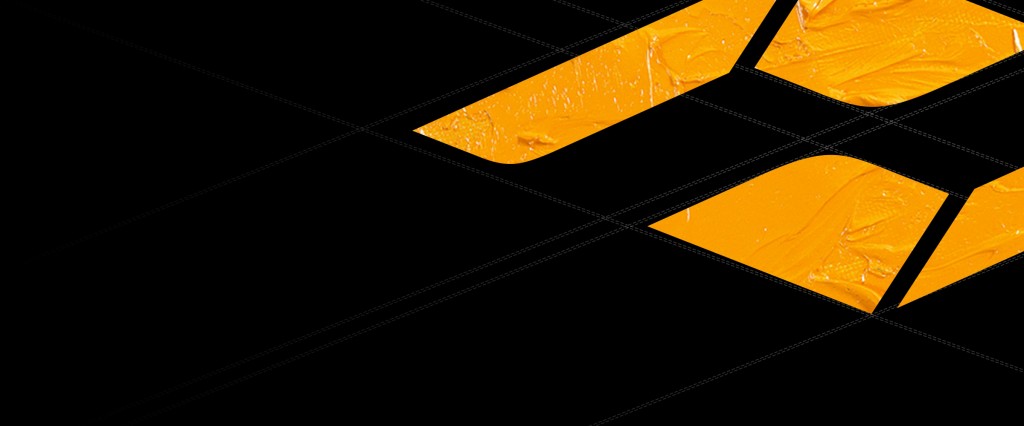No products in the cart.
Filming Cases, Others
Hanging Gardens
“KINEFINITY cameras are like huge treasures to explore, just waiting to be discovered. Every shot is a very interesting camera trip for me.”

We have invited the director of photography, Duraid Munajim CSC, of this film to share the behind-the-scenes story of “Hanging Gardens” with us.

Q What kind of story is “Hanging Gardens”? Can you share with us your initial impressions when you first read the script?
Duraid Hanging Gardens is a work that reflects the reality of Iraq. The story takes place in post-U.S. withdrawal Iraq, and the protagonist is a 12-year-old boy named As`ad. He discovers a silicone doll discarded by American soldiers, and gradually develops an emotional connection with it, which sets the story in motion.
The film is narrated from the perspective of a child, so it is filled with innocence and fantasy. As`ad is going through a sexual awakening. He is a boy with dreams who wants to escape his predicament, while everything happening around him reflects the cruelty of war and invasion. The film is so gripping because we don’t directly talk about war, but you can feel it in every frame.
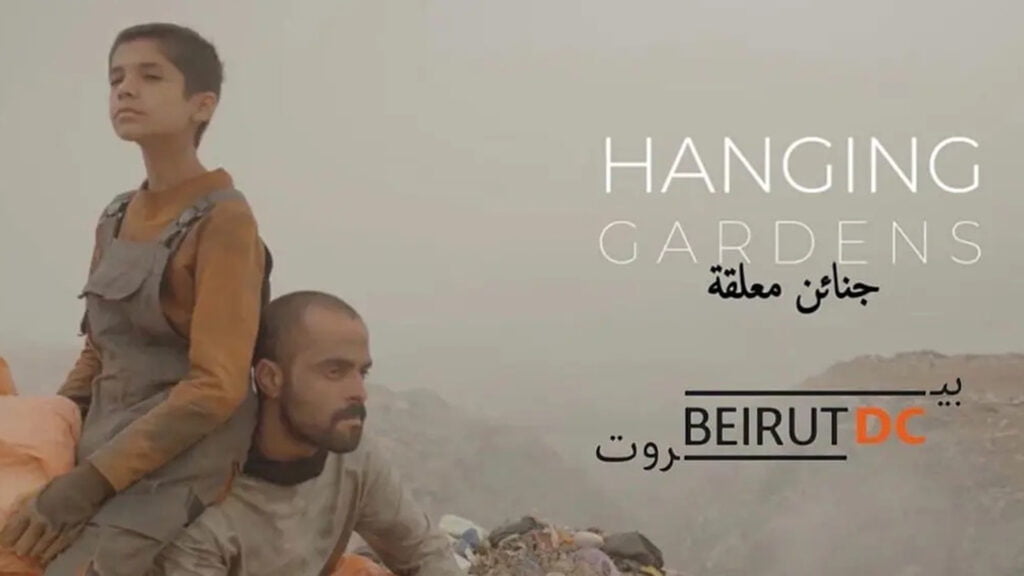
Hanging Gardens
When I read the script for the first time, I was surprised and shocked by the direction of the story. In many early Iraqi films, the connection to war is directly portrayed, and audiences receive countless messages about tragedy and victims. But this film is actually telling the story of a little boy. From the first read of the script to the start of the film production, we spent three years preparing. I discussed each scene with the director, contemplating the tone of the film and the deeper meaning behind it. I had a feeling that we were making a completely new Iraqi film.
Q After reading the script and understanding the story, what were your ideas for the visual presentation, and were they successfully realized?
Duraid Hanging Gardens is a very good story. Although the production budget was limited, and Iraq is not a major film production country, as long as we could tell the story well with good tools, everything else would fall into place. That’s when the MAVO LF camera came into play.
KINEFINITY cameras were a huge surprise. After conducting many tests, we realized that it was the most suitable camera. There were no dedicated studios at any of the shooting locations, and we didn’t use any professional lighting equipment during the filming process. The MAVO LF camera perfectly achieved the effects we desired.
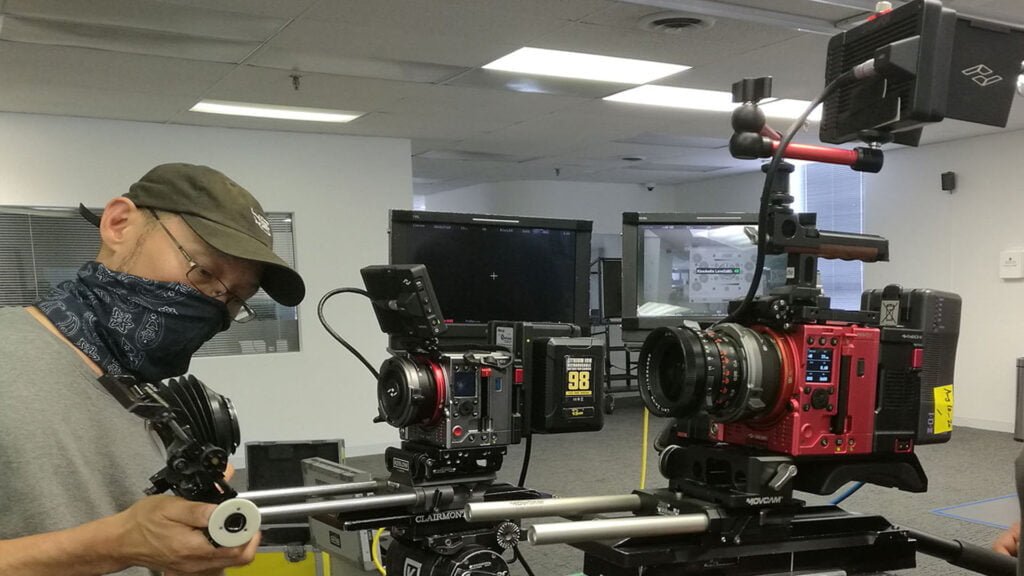
Duraid testing the MAVO LF with his AC
MAVO LF is the only camera I know of that can adapt to so many lens mounts, giving us more options for shooting. Considering the style and budget, the director and I decided to use two prime lenses throughout the film, namely the VOIGTLANDER 21mm and 40mm. One of the advantages of the MAVO LF camera is its ability to quickly switch between S35 and full-frame formats while maintaining a 4K UHD resolution. With two lenses, this allows for four different compositions.

Q How do you pair and use the lenses with S35 and full-frame?
Duraid When using the 21mm lens, shooting in full-frame format provides an extremely wide-angle view, which is particularly beneficial for outdoor scenes and can create an epic feel. For example, the opening scene in the movie is set in a five-square-kilometer landfill in Baghdad, with piles of burning garbage forming a valley. Within this vast space, hundreds of people scavenge for trash, resembling a city.
On the other hand, when we needed a wide-angle lens with minimal distortion, I set the format to S35, which has a slightly narrower field of view but less distortion. Additionally, using the full-frame format with the 40mm lens closely mimics the perspective of the human eye, capturing most of the scenes we desired.

Baghdad Giant Garbage Dump
The MAVO LF camera allows for quick format switching, making it convenient for evaluating the visual effects of different compositions. If we needed to shoot a close-up of a person but were concerned about distortion, we could easily switch between formats using the camera’s presets. This switching process is fast and convenient, something I’ve tried with many other cameras but haven’t found such seamless functionality.
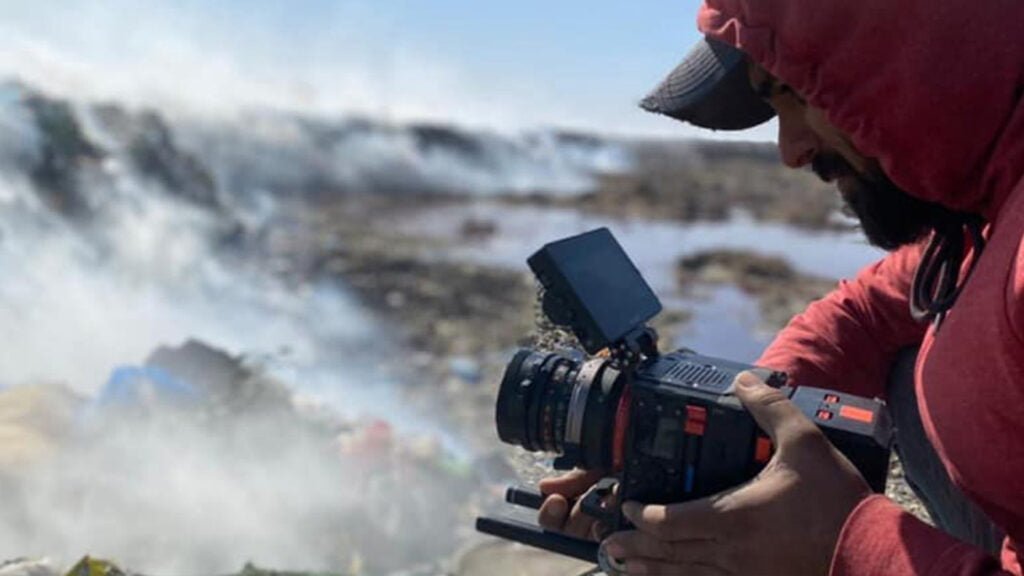
Duraid’s AC filming at the garbage dump
Q Was the film shot entirely using natural light?

Filming under practical lighting conditions
There’s a scene in the film where we didn’t create any artificial outdoor lighting and solely relied on fireworks as a light source. The resulting effect is truly remarkable. Just 5 to 10 years ago, it would have required additional lighting equipment to achieve this. I’m grateful to KINEFINITY for developing a camera that allows us to capture the most authentic representation of things freely.

The light from the fireworks falls on people’s faces
There’s another scene in the movie where we didn’t use any professional lighting equipment either. It takes place at night, with Yassir inside a truck on a quiet and dark street, illuminated only by a faint light from a lamp 20 meters away. For this night exterior, I used a backup Mitakon 50mm lens, which has the advantage of a maximum aperture of F0.95. It provided great assistance in shooting extremely dark scenes, resulting in beautifully captured images.
During the shoot, there was a scene that took place in a very small bathroom, and I had to be creative to accomplish the filming in such a narrow space. Since the KineBACK-W of the MAVO LF camera is detachable, I decided to remove it. Although this prevented me from recording audio through the camera’s microphone port, it made the already lightweight camera even more compact and portable. Therefore, I opted to use a separate recording device, requiring the sound engineer to hide the microphone in a discreet corner of the bathroom for audio capture.
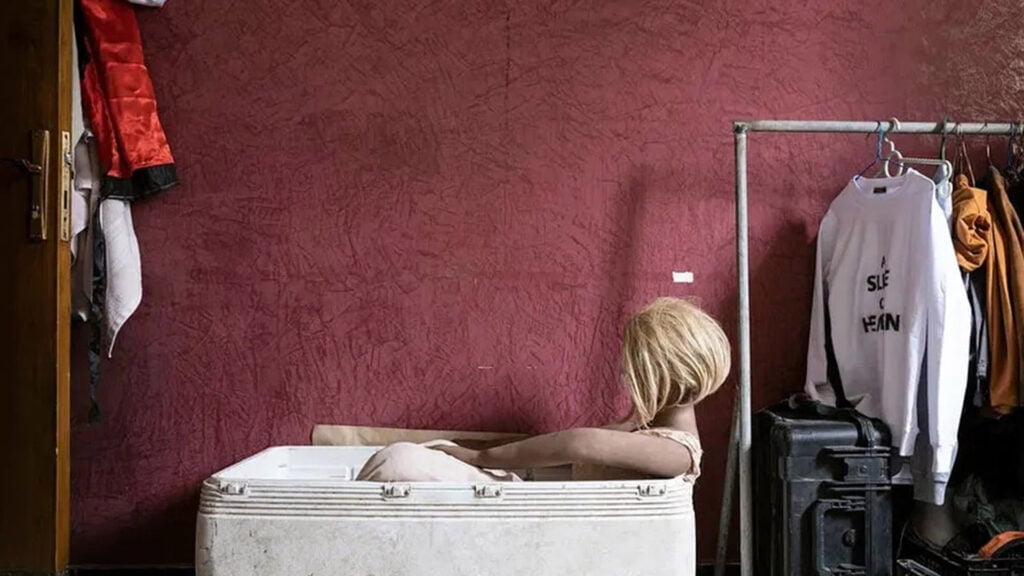
The silicone doll in the bathroom

Q I heard that this film has participated in many film festivals. Could you share your experience at the film festivals?
Duraid Two months ago, while we were color grading the film in Egypt, we received a letter from a programmer at the Venice Film Festival, stating that it was one of the greatest films he had seen from the Middle East.
We indeed made a great film with a powerful and touching impact. It was the first time in over 70 years that an Iraqi film was screened at the Venice Film Festival, marking the beginning of our festival journey. “The Garden in the Air” has been showcased at the Busan International Film Festival, Rome Film Festival, and the Asia Pacific Film Festival, and it was honored as the Best Film at the 2nd Red Sea International Film Festival. It’s truly incredible.

The Red Sea International Film Festival
Q Is this your first collaboration with the director?
Duraid When I first met the director, he was just 16 years old, a young lad. He had previously worked as a production assistant on the film “Syn Babilonu” and spent a few years studying at a film school in London, where he made a short film and expanded his knowledge of cinema.
We stayed in touch over the years and became good friends, which eventually led to a working relationship. He believed that I could ensure the film would be realized in the way he envisioned it, and he knew that if I said “yes” to the project, I would strive for excellence in all aspects, rigorously maintaining the film’s quality. He needed a collaborator by his side for communication and discussion, which was quite interesting. Usually, people see a cinematographer who focuses on shooting, lighting, and determining aperture settings. But now, he also had discussions with the director about the plot, meticulously confirming the trajectory of the story. This was a crucial aspect because it meant the cinematographer became one of the storytellers, requiring a close connection with the director to ensure the desired visuals were captured.
I believe it was our deep friendship, long-term collaboration, shared love for Iraqi cinema, and our collective hope for a better future for Iraq that enabled us to shoot this film together.

Hanging Gardens Director Ahmed Yassin Aldaradji
Q Do you have any further suggestions regarding our cameras?
Duraid After discussing with the director, for our next project, we are definitely going to shoot with KINEFINITY cameras. KINEFINITY cameras are like huge treasures to explore, just waiting to be discovered. Every shot is a very interesting camera trip for me. Especially the MAVO Edge series, it addresses some of the issues present in older cameras and eliminates the hassle of having an HDMI port on set. The user-friendly interface and the SDI menu in the KineOS 7.1 firmware have left a deep impression on me.
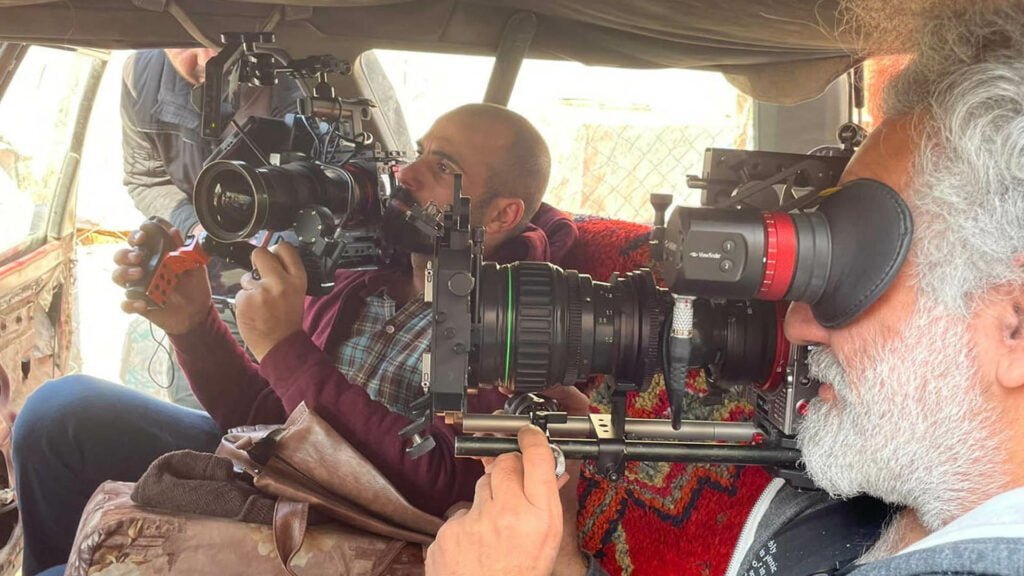
Duraid and his AC shooting in Iraq
In terms of quality, I believe KINEFINITY cameras offer excellent value for money, especially when compared to some of the bigger manufacturers. The color reproduction, similar to ARRI, is stunning and showcases a high level of professionalism. It is very easy to handle and can be used in various working environments. The build quality of the MAVO Edge camera itself is excellent, and I am eagerly looking forward to using it for my work. I have high expectations for the future development of KINEFINITY cameras, and I believe they will only get better.
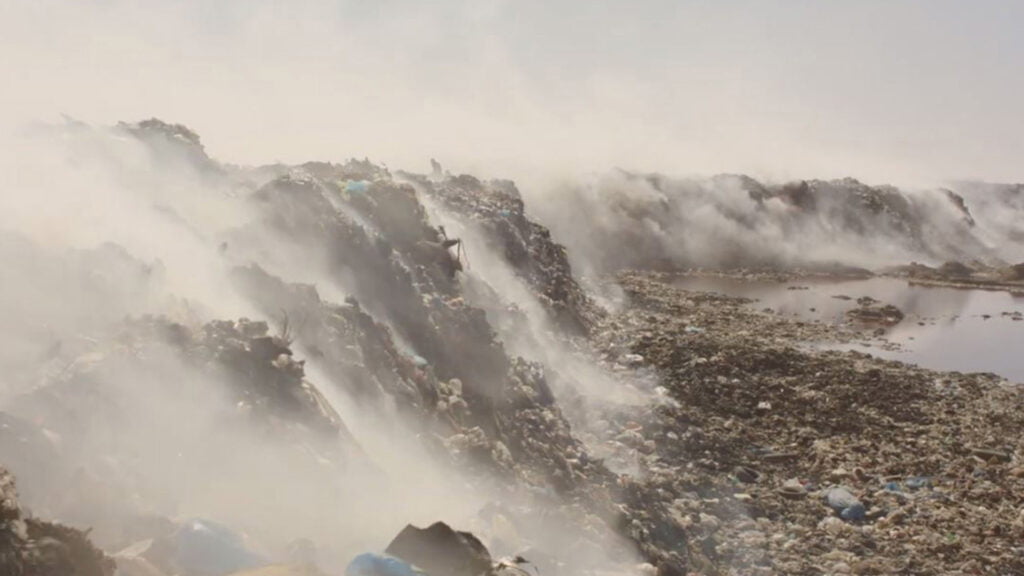
The Hanging Gardens of Babylon
Q Lastly, is there anything you would like to say to KINEFINITY cameras?
Duraid KINEFINITY’s vision of providing highly user-friendly cameras for cinematographers was crucial during the challenging times we faced. We are grateful for KINEFINITY’s support of us young independent filmmakers, and the presence of KINEFINITY cameras is a great thing for independent filmmakers worldwide. For me, it has been a fascinating journey with these cameras.

The ruins of cities in Iraq
“There's a scene in the film where we didn't create any artificial outdoor lighting and solely relied on fireworks as a light source. The resulting effect is truly remarkable. Just 5 to 10 years ago, it would have required additional lighting equipment to achieve this. I'm grateful to KINEFINITY for developing a camera that allows us to capture the most authentic representation of things freely.”

Duraid Munajim CSC
DoP of Hanging Gardens
Hanging Gardens not only made it as an official selection at the 79th Venice International Film Festival but also stands as a remarkable Middle Eastern film. KINEFINITY is honored to have contributed to the film’s production process.
KINEFINITY has always been committed to providing efficient, user-friendly, and high-performance cameras for filmmakers worldwide.
Wishing every filmmaker the opportunity to shine in the world of cinema!
